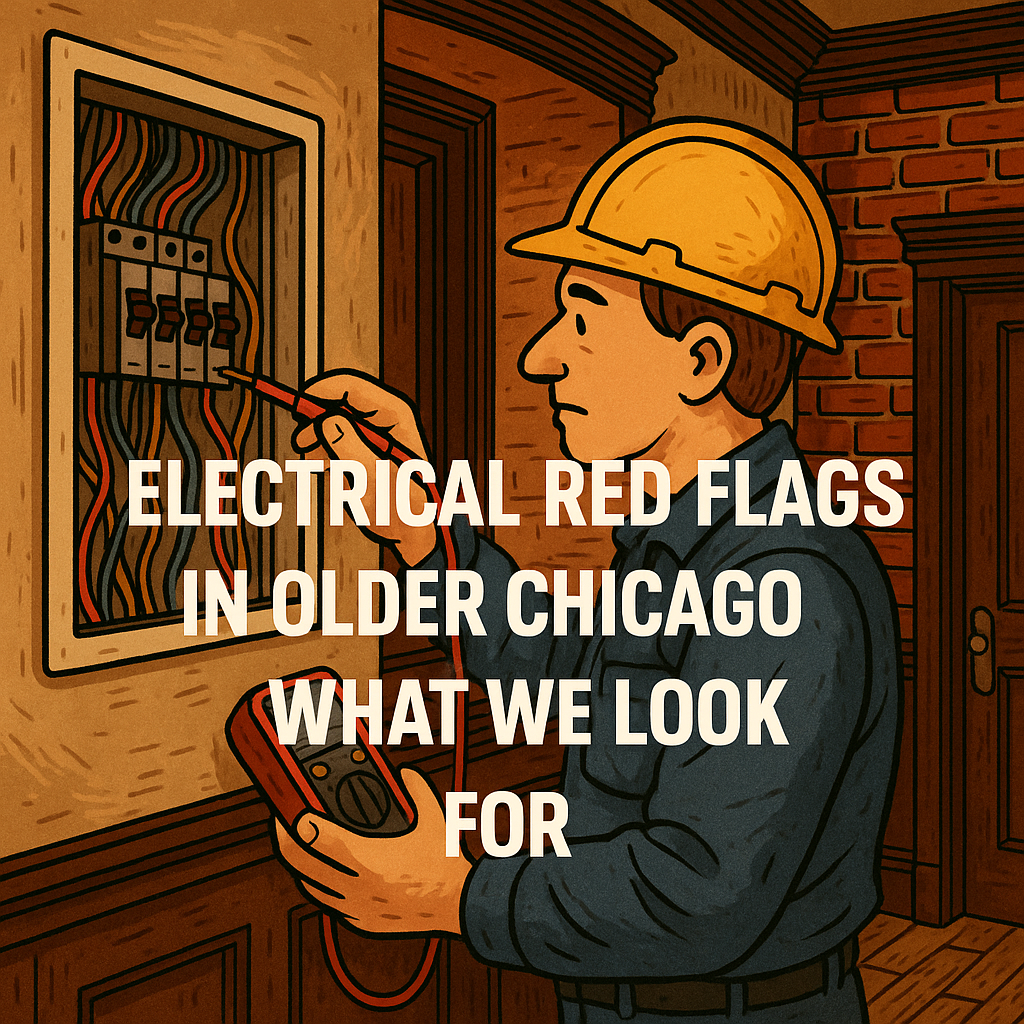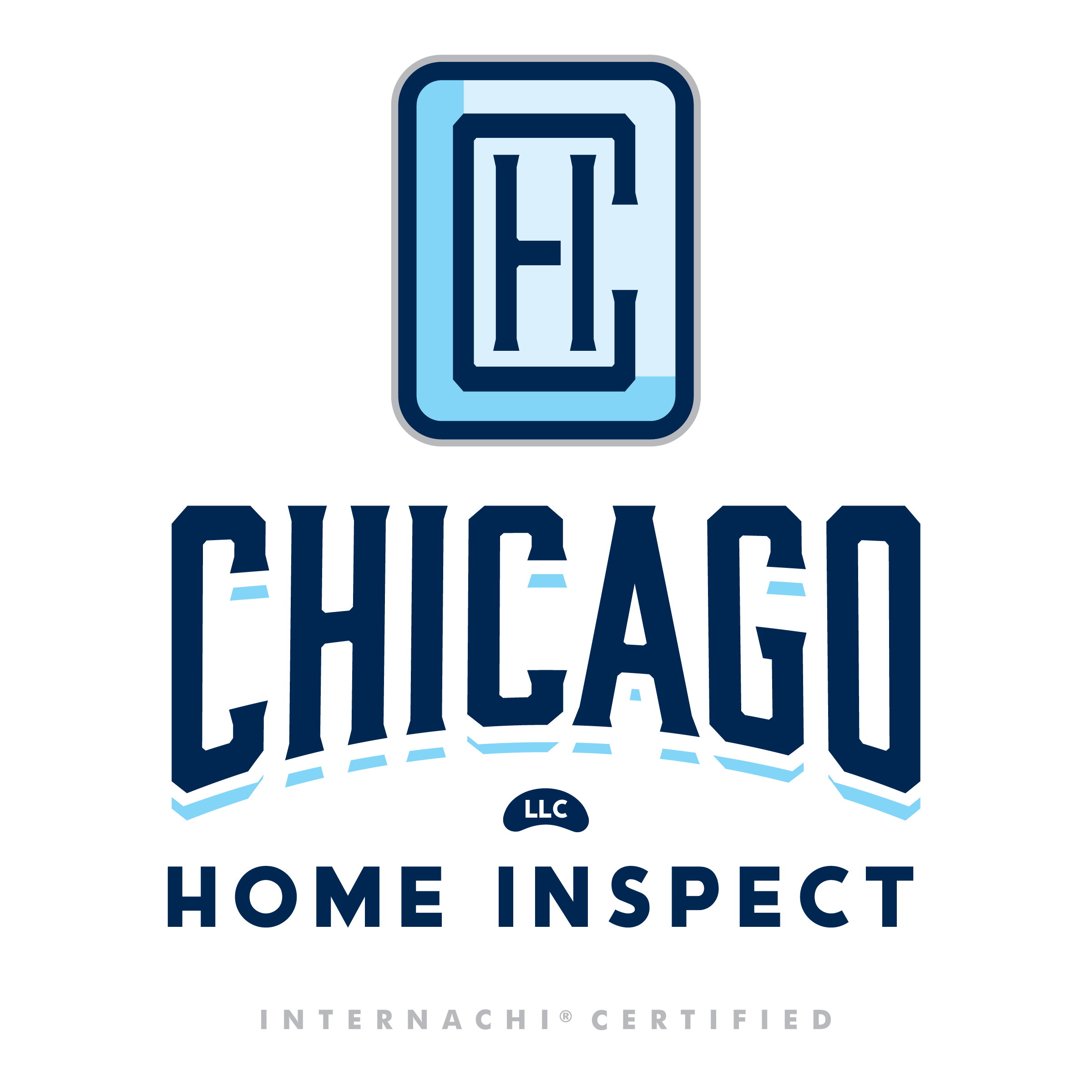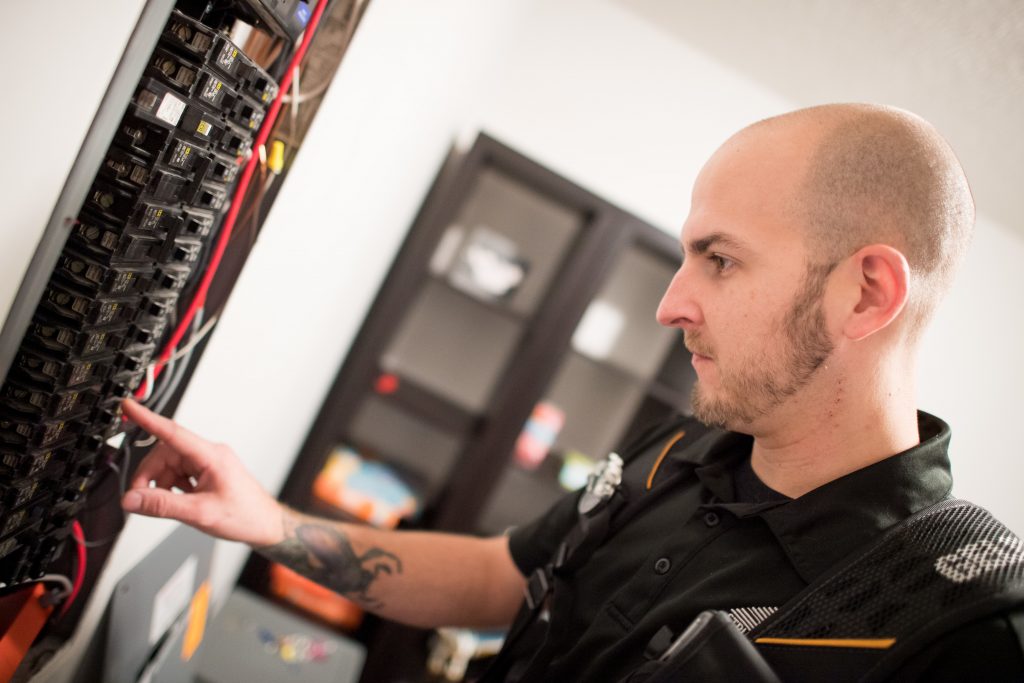
Chicago is home to some of the most beautiful vintage residences in the country—bungalows, greystones, two-flats, and mid-century homes that showcase timeless charm. But behind their character-filled walls may lie outdated or unsafe electrical systems that pose risks to safety and functionality, making an electrical home inspection essential.
In this blog post, we’ll walk you through the most common electrical red flags we find during an electrical home inspection, how they can affect buyers, and why a detailed inspection is crucial for protecting both your investment and your safety.
Why Electrical Issues Deserve Special Attention
Electricity powers everything in your home—lighting, appliances, HVAC systems, and increasingly, smart devices. Faulty wiring can lead to electrocution, appliance damage, and house fires. And while modern systems are built with numerous safety redundancies, older homes often weren’t designed for today’s electrical loads or safety standards, highlighting the need for an electrical home inspection.
What’s worse, many electrical issues are invisible without the right tools and training. Homebuyers walking through a home may flip a switch or plug in a phone charger, but those actions don’t reveal what’s lurking behind the walls.
Common Electrical Problems in Older Chicago Homes
1. Knob-and-Tube Wiring (K&T)
Used in homes built from the late 1800s through the 1940s, K&T wiring is now considered obsolete and hazardous. It lacks grounding, is insulated with materials that degrade over time, and wasn’t designed to handle modern electrical demands.
While some homes still have K&T partially in use (especially in attics or crawlspaces), insurance companies often refuse coverage for homes with active K&T wiring. We inspect for this system visually and note any signs of improper alterations.
2. Ungrounded Outlets
Three-prong outlets without a grounding path are a serious safety concern. Grounding helps protect you and your appliances from surges. In some cases, we find homes with upgraded outlets (from two-prong to three-prong) that are not actually grounded—a deceptive and dangerous practice.
Our testers can determine if a ground is present, and whether receptacles are wired correctly. If they’re not, rewiring may be necessary.
3. Overloaded Circuits and Panels
Many older Chicago homes were built with 60- or 100-amp service, whereas today’s standards call for at least 100 amps, with 200 amps being more common in modern builds. We often see panels packed with double-tapped breakers or fused panels that can no longer accommodate household demand.
These outdated panels are not only a fire hazard but may also limit the ability to add new appliances or HVAC upgrades. We assess panel condition, amperage, and any evidence of overheating or breaker malfunctions.
4. Aluminum Wiring
Homes built in the late 1960s to mid-1970s may have aluminum branch circuit wiring—a known fire hazard. Aluminum expands more than copper, loosens connections over time, and is prone to oxidation.
During inspections, we identify aluminum wiring and look for approved retrofit methods, such as COPALUM crimps or AlumiConn connectors, which help make the system safer without a complete rewire.
5. Improper Junction Boxes and Splicing
We often discover wire splices made without junction boxes or covers—especially in attics, basements, and behind drywall. This is both a code violation and a fire hazard. Every splice should be enclosed in a properly rated junction box with a secure cover.
We also check for overloaded boxes (too many wires crammed in) and loose wire nuts or connections.
6. Missing or Faulty GFCI Protection
Ground Fault Circuit Interrupters (GFCIs) are required in wet or damp areas—like kitchens, bathrooms, laundry rooms, basements, and outdoor outlets. Older homes may lack GFCIs entirely or have ones that no longer trip as intended.
We test every GFCI receptacle to ensure they function correctly and trip under fault conditions, protecting occupants from shock.
7. Light Fixtures and Switch Issues
From flickering lights and loose switches to incorrectly wired 3-way circuits, lighting systems reveal a lot about a home’s electrical condition. We check for heat damage, buzzing, improper dimmers, and signs of arcing inside junction boxes.
In many older homes, fixture boxes aren’t rated to support ceiling fans or heavy fixtures—a potential hazard.
Chicago-Specific Electrical Concerns
Aging Infrastructure
Chicago’s age and density mean many homes still rely on older electrical services, particularly in neighborhoods like Rogers Park, Pilsen, and Humboldt Park. Homes that haven’t been updated in decades may still use fuse boxes, undersized service lines, or deteriorating service drops.
Conduit Systems
Chicago is one of the few cities where electrical wiring is typically run in metal conduit (EMT). While this offers added durability and grounding benefits, older EMT systems can rust, come loose from boxes, or be improperly bonded—compromising safety.
Utility Access and Metering
In multi-unit buildings, shared metering and confusing electrical layouts are common. We inspect for double-lugged meters, unauthorized tap-ins, and whether circuits are properly separated for each unit.
What We Check During an Electrical Inspection
At Chicago Home Inspect LLC, we perform a thorough review of every accessible electrical component, including:
- Service panel (breaker or fuse)
- Main disconnect amperage
- Subpanels
- Wiring material and condition
- Receptacles and switches
- GFCI and AFCI protection
- Lighting and ceiling boxes
- Smoke and CO detectors
- Grounding and bonding system
- Attic and basement junctions
- Outlets for major appliances
- Electrical clearance and labeling
We use voltage testers, GFCI/AFCI trip testers, infrared cameras, and other diagnostic tools to detect hazards without damaging walls.
For Buyers: What to Watch Out For
- Ask the seller or agent about electrical updates.
Look for permits or evidence of recent work done to code. - Get clarity on the amperage and type of panel.
If it’s a Zinsco or Federal Pacific panel, be cautious—these brands are linked to fire hazards and often need replacement. - Don’t rely on appearances alone.
A new cover plate or outlet doesn’t mean the wiring behind it is safe or modern.
For Sellers: Prepare Ahead of Time
A pre-listing inspection can help you spot issues before a buyer’s inspector flags them. Fixing minor things like loose outlets, exposed wiring, or missing GFCI protection can prevent deal-killing surprises and build buyer confidence.
For Agents: Protect Your Clients
Whether you represent the buyer or seller, partnering with a reputable home inspection company like Chicago Home Inspect LLC ensures accurate reporting and fewer surprises during negotiations. We also provide digital reports with photos and clear recommendations, making it easy for your clients to understand and act on findings.
Final Thoughts
Electrical systems are the heartbeat of a home—but in older homes, they can be ticking time bombs if not properly maintained or updated. What you don’t see can hurt you—literally. That’s why a thorough inspection is so vital.
Whether you’re buying a 1920s brick bungalow or a 1960s split-level, make sure the electrical system is part of your due diligence. With expert guidance, potential risks can be identified and addressed before they become dangerous or expensive.



